-
BackX
-
Components
-
-
Category
-
Semiconductors
- Diodes
- Thyristors
-
Electro-insulated Modules
- Electro-insulated Modules | VISHAY (IR)
- Electro-insulated Modules | INFINEON (EUPEC)
- Electro-insulated Modules | Semikron
- Electro-insulated Modules | POWEREX
- Electro-insulated Modules | IXYS
- Electro-insulated Modules | POSEICO
- Electro-insulated Modules | ABB
- Electro-insulated Modules | TECHSEM
- Go to the subcategory
- Bridge Rectifiers
-
Transistors
- Transistors | GeneSiC
- SiC MOSFET Modules | Mitsubishi
- SiC MOSFET Modules | STARPOWER
- Module SiC MOSFET ABB’s
- IGBT Modules | MITSUBISHI
- Transistor Modules | MITSUBISHI
- MOSFET Modules | MITSUBISHI
- Transistor Modules | ABB
- IGBT Modules | POWEREX
- IGBT Modules | INFINEON (EUPEC)
- Silicon Carbide (SiC) semiconductor elements
- Go to the subcategory
- Gate Drivers
- Power Blocks
- Go to the subcategory
- Electrical Transducers
-
Passive components (capacitors, resistors, fuses, filters)
- Resistors
-
Fuses
- Miniature Fuses for electronic circuits - ABC & AGC Series
- Tubular Fast-acting Fuses
- Time-delay Fuse Links with GL/GG & AM characteristics
- Ultrafast Fuse Links
- Fast-acting Fuses (British & American standard)
- Fast-acting Fuses (European standard)
- Traction Fuses
- High-voltage Fuse Links
- Go to the subcategory
- Capacitors
- EMI Filters
- Supercapacitors
- Power surge protection
- Go to the subcategory
-
Relays and Contactors
- Relays and Contactors - Theory
- 3-Phase AC Semiconductor Relays
- DC Semiconductor Relays
- Controllers, Control Systems and Accessories
- Soft Starters and Reversible Relays
- Electromechanical Relays
- Contactors
- Rotary Switches
-
Single-Phase AC Semiconductor Relays
- AC ONE PHASE RELAYS 1 series| D2425 | D2450
- One phase semiconductor AC relays CWA and CWD series
- One phase semiconductor AC relays CMRA and CMRD series
- One phase semiconductor AC relays - PS series
- Double and quadruple semiconductor AC relays - D24 D, TD24 Q, H12D48 D series
- One phase semiconductor relays - gn series
- Ckr series single phase solid state relays
- One phase AC semiconductor relays for DIN bus - ERDA I ERAA series
- 150A AC single phase relays
- Rail Mountable Solid State Relays With Integrated Heat Sink - ENDA, ERDA1 / ERAA1 series
- Go to the subcategory
- Single-Phase AC Semiconductor Relays for PCBs
- Interface Relays
- Go to the subcategory
- Cores and Other Inductive Components
- Heatsinks, Varistors, Thermal Protection
- Fans
- Air Conditioning, Accessories for Electrical Cabinets, Coolers
-
Batteries, Chargers, Buffer Power Supplies and Inverters
- Batteries, Chargers - Theoretical Description
- Modular Li-ion Battery Building Blocks, Custom Batteries, BMS
- Batteries
- Battery Chargers and Accessories
- Uninterruptible Power Supply and Buffer Power Supplies
- Inverters and Photovoltaic Equipments
- Energy storage
- Fuel cells
- Lithium-ion batteries
- Go to the subcategory
-
Automatics
- Futaba Drone Parts
- Limit Switches, Microswitches
- Sensors, Transducers
-
Infrared Thermometers (Pyrometers)
- IR-TE Series - Water-proof Palm-sized Radiation Thermometer
- IR-TA Series - Handheld Type Radiation Thermometer
- IR-H Series - Handheld Type Radiation Thermometer
- IR-BA Series - High-speed Compact Radiation Thermometer
- IR-FA Series - Fiber Optic Radiation Thermometer
- IR-BZ Series - Compact Infrared Thermometers
- Go to the subcategory
- Counters, Time Relays, Panel Meters
- Industrial Protection Devices
- Light and Sound Signalling
- Thermographic Camera
- LED Displays
- Control Equipments
-
Recorders
- Hybrid Recorders - AL3000 Series | CHINO
- Graphic Recorder - KR2000 Series | CHINO
- Ubiquitous Recorders - KR5000 Series | CHINO
- Palm-sized Temperature/Humidity Meters - HN-CH Series | CHINO
- Consumables for Recorders
- 71VR1 - Compact Paperless Recorder | M-SYSTEM
- Graphic Recorder - KR3000 Series | CHINO
- PC Recorders - R1M Series | M-SYSTEM
- PC Recorders - R2M Series | M-SYSTEM
- PC Recorders - RZMS Series | M-SYSTEM
- PC Recorders - RZUS Series | M-SYSTEM
- Go to the subcategory
- Go to the subcategory
-
Cables, Litz wires, Conduits, Flexible connections
- Wires
- Litz wires
- Cables for extreme applications
- Sleevings
-
Braids
- Flat Braids
- Round Braids
- Very Flexible Flat Braids
- Very Flexible Round Braids
- Cylindrical Cooper Braids
- Cylindrical Cooper Braids and Sleevings
- Flexible Earthing Connections
- Galvanized and Stainless Steel Cylindrical Braids
- PCV Insulated Copper Braids (temp. up to 85C)
- Flat Aluminium Braids
- Junction Set - Braids and Tubes
- Go to the subcategory
- Traction Equipment
- Cable Terminals
- Flexible Insulated Busbars
- Flexible Multilayer Busbars
- Cable Duct Systems
- Hoses
- Go to the subcategory
- View all categories
-
Semiconductors
-
-
- Suppliers
-
Applications
- CNC Machine Tools
- DC and AC Drives (Inverters)
- Energetics
- Energy bank
- Equipment and Components for Hazardous Areas [Ex]
- Equipment for Distribution, Control and Telecommunications Cabinets
- HVAC Automation
- Induction Heating
- Industrial Automation
- Industrial Protective Devices
- Machines for Drying and Wood Processing
- Machines for Thermoforming Plastics
- Mining, Metallurgy and Foundry
- Motors and Transformers
- Power Supplies (UPS) and Rectifier Systems
- Printing
- Temperature Measurement and Regulation
- Test and Laboratory Measurements
- Tram and Railway Traction
- Welding Machines
-
Assembly
-
-
Inductors
-
-
Induction devices
-
-
https://www.dacpol.eu/pl/naprawy-i-modernizacje
-
-
Service
-
- Contact
- Zobacz wszystkie kategorie
How to Choose LED Lighting? A Guide on Durability, Testing, and Replacements

LED Lighting (Light Emitting Diode) is a modern technology that has revolutionized the way both domestic and industrial spaces are illuminated. LED diodes are known for their energy efficiency, long lifespan, and high light output. Thanks to these features, LED lighting has become not only an environmentally friendly solution but also an economical one.
In industry, where operational costs and reliability are paramount, LED technology proves to be ideal. Its resistance to harsh working conditions such as high humidity, presence of oils, or vibrations makes it an excellent choice for applications in CNC machines, production lines, and other demanding environments. Additionally, the absence of UV and IR radiation ensures that LEDs do not heat up the surfaces they illuminate, which is crucial in precise manufacturing processes.
How is LED lighting tested?
How is LED durability tested?
LED durability testing is an essential part of verifying the quality and reliability of products. Due to the long lifespan declared by manufacturers, which can be as much as 50,000 hours, standard testing methods must be appropriately adapted. Continuous testing would take over 5.7 years, so more efficient and shortened research procedures have been developed.
Burn-in and stabilization (first stage – 1000 hours)
The first stage of testing is the burn-in and stabilization of the LEDs, which lasts 1000 hours. During this period, the lighting operates under controlled conditions with appropriate current or voltage supply. The goal of this stage is to evaluate the initial increase in light output, which often occurs in the first hours of use. Stabilizing the LED parameters after this period allows for more reliable results in further tests.
Long-term durability tests (second stage – 5000-6000 hours)
The second stage involves tests lasting from 5000 to 6000 hours. After this period, a light output measurement is made, which is compared to the value obtained in the first stage. The results help assess whether the brightness drop exceeds 30% of the initial value. If the light output drop remains within the specified limit, the analysis can proceed to the next step.
Extrapolation of results – how is LED durability predicted based on tests?
Based on the data obtained during the tests, extrapolation is performed, which allows for predicting the long-term durability of LEDs. If after 6000 hours the light output has not dropped below 70% of the initial value, the LEDs meet the assumptions regarding their long lifespan. This method allows for reliable durability estimation without the need for multi-year testing.
Modern methods of determining LED durability (according to IEC standards)
IEC standards introduce methods for determining LED durability, which include measurements at various temperatures and the evaluation of LED module quality. These tests are more precise and reflect the real-world conditions in which lighting is used.
Measurement at different temperatures (55°C, 85°C, and manufacturer's temperature)
Under IEC standards, LED durability is assessed based on light output measurements performed at three temperatures: 55°C, 85°C, and the temperature specified by the manufacturer. A key element is monitoring the temperature at the measurement point on the LED module, which allows for accurate determination of how thermal conditions affect the LED's durability.
Verification of light output drop (70% as the minimum threshold)
During tests, it is checked whether the drop in light output during use does not exceed 30% of the initial value. If the light output remains above 70% of the initial brightness, the LED's durability is considered to meet the manufacturer's declarations. This approach provides better verification of lighting quality and helps tailor products for demanding industrial applications.
What factors affect LED lighting durability?
Effect of temperature on LED lifespan
Operating temperature is one of the most important factors influencing the durability and performance of LEDs. High temperatures, especially at the semiconductor junction, can accelerate the aging process of components and lead to faster light output degradation. To prevent this, manufacturers employ advanced heat dissipation solutions.
Why is heat at the semiconductor junction critical?
The semiconductor junction, where the light is generated, is particularly sensitive to overheating. Elevated temperatures can lead to degradation of the materials used in the LED and reduce light emission efficiency. Maintaining an appropriate temperature at the junction is therefore crucial for ensuring the declared durability of the diodes.
What heat dissipation solutions ensure durability?
To effectively dissipate heat, manufacturers use a variety of technologies, such as:
• Aluminum heat sinks – they increase the heat exchange surface area and enable quick heat removal from the LED modules.
• Thermal pastes – they improve thermal conductivity between the LED module and the heat sink.
• Active cooling systems – in more demanding applications, fans or other mechanical solutions are used to provide effective cooling.
The role of proper power supply
Power quality is equally important for the longevity of LED lighting. Voltage fluctuations, surges, or harmonic disturbances can affect the operation of diodes, leading to damage or reduced efficiency.
Impact of network disturbances on LED durability
Electrical network disturbances, such as harmonics, flicker, or surges, can negatively impact the lifespan of LED lighting. For example:
• Flicker (light flickering) – can cause power instability and accelerate degradation.
• Surges – short voltage spikes can damage the diodes and electronic components in LED drivers.
How can harmonics, flicker, and surges damage LEDs?
Harmonics generated by network disturbances increase the load on power supply systems. If the LED driver lacks proper protection, permanent diode damage may occur. Therefore, it is crucial to use high-quality drivers equipped with filters to suppress interference.
The importance of compatible components
Choosing the right components, such as radiators, thermal pastes, and fans, is key to ensuring the durability of LED lighting. Compatibility with the manufacturer's recommendations allows for optimal operation of the entire system.
Radiators, thermal pastes, and fans
Each of these components plays a crucial role in the heat dissipation system:
• Radiators enhance cooling efficiency.
• Thermal pastes eliminate air gaps between components, ensuring better heat transfer.
• Fans are used in applications requiring active cooling.
Why is selecting components compliant with the manufacturer's recommendations important?
The LED manufacturer specifies operating conditions, such as maximum junction temperature or allowable voltages. Component incompatibility can lead to ineffective cooling or diode damage, significantly reducing their durability and efficiency.
Modern LED solutions for the industry
Contemporary LED lighting designed for industrial use must meet several requirements related to high energy efficiency, durability, and resistance to harsh working conditions. In response to these needs, various LED solutions are available for demanding production, machinery, and warehouse environments. Here are some of the latest products gaining popularity in the industry:
SIRIO LED Series – Compact and Functional Fixtures
The SIRIO LED Series offers a range of fixtures characterized by excellent workmanship, compact sizes, and versatility. With various power options and lengths tailored to different needs, these fixtures are an excellent solution for diverse industrial applications.
• SIRIO LED BLM Tube Ø70 mm – This is one of the larger fixtures in the series, available in several lengths: 505 mm, 660 mm, 10160 mm, and 1465 mm. Power options include 24V DC, 48V DC, and 230V AC, allowing flexible adaptation to various industrial installations. Depending on the model, the cover is made of borosilicate glass or methacrylate, ensuring resistance to harsh working conditions.
• SIRIO LED BLS Tube Ø60 mm – A smaller version of the fixture offering similar parameters but with an even more compact design. With a diameter of 60 mm and various length options, it is an ideal solution for spaces with limited mounting area.
• SIRIO LED BLG Tube Ø50 mm – The smallest model in the series, featuring a diameter of 50 mm. The cover is made of polycarbonate, which increases resistance to mechanical damage, making it a suitable option for applications in areas exposed to shocks and impacts.
Machine Lamps by CCEA
Machine lamps by CCEA are modern solutions for demanding industrial environments. The product features a solid aluminum housing that ensures high resistance to vibrations and effective heat dissipation.
• Track Alpha – This is a surface-mounted machine lamp built with a durable aluminum housing, providing high resistance to vibrations as well as oils, coolants, and dust. Track Alpha is designed for use in the most demanding environments, such as CNC machines or automation systems. With an IP67 protection rating, these lamps perform excellently in humid and dusty conditions.
The lamp offers an intense light output of up to 6500 lumens, with a lifespan of up to 60,000 hours. Track Alpha is available in various lengths and connectors, allowing for easy installation and integration with existing lighting systems. Additionally, the lamp features great mounting flexibility and the ability to adjust the light angle, making it an exceptionally versatile solution for various industrial applications.
Advantages of Track Alpha:
o Resistant to oils, coolants, greases, and vibrations
o Long service life – up to 60,000 hours
o Energy savings – up to 50% compared to traditional solutions
o Easy and quick installation without the need for additional power supply devices
SYMRA IP69K Fixtures
Symra IP69K are luminaires with exceptional resistance to extreme external conditions, making them an ideal solution for harsh industrial environments where extreme temperatures, humidity, or dust prevail. Thanks to the IP69K protection class, these lamps are resistant to dust ingress as well as prolonged immersion in high-pressure water, making them reliable even in the most demanding conditions.
SYMRA luminaires are designed with extreme durability and reliability in mind for challenging industrial environments. With their robust construction and the use of the latest LED technologies, these luminaires offer long service life, low energy consumption, and efficient lighting. They are also easy to install and maintain, making them an ideal solution for companies seeking reliable lighting in harsh conditions.
Advantages of SYMRA IP69K luminaires:
• High resistance to water, dust, and high pressure
• Long-lasting, energy-efficient operation
• Excellent light performance and high durability
We also offer LED luminaires designed for use in areas where there is a potentially explosive atmosphere caused by the presence of flammable gases or dusts. These are lamps that combine several methods of protection to reduce the risk of a spark initiating an explosion, thereby keeping the level of safety on the installation above the minimum required. They are all ATEX certified.
How to choose the right LED lighting?
Choosing the right LED lighting for an industrial facility is crucial to ensuring energy efficiency, maintaining lighting durability, and improving working conditions. It is important to consider several key aspects that impact the effectiveness and reliability of lighting systems.
1. Durability and reliability of LED lighting – The first step in selecting lighting is to check the parameters related to the durability of light sources. Testing LEDs and understanding the factors that affect their longevity, such as operating temperature, power quality, or proper heat management, are the foundation for ensuring long-lasting and efficient operation. It is important that the lighting is resistant to voltage fluctuations, surges, and other disturbances that can negatively affect its performance.
2. Optimal heat management – Proper heat dissipation from LED diodes is one of the key factors affecting their durability. High temperatures can lead to light flux degradation and shorten the lifespan of the lighting. Therefore, it is worth choosing solutions that offer efficient heat sinks, thermal paste, or fans. Selecting components compliant with the manufacturer’s recommendations ensures maximum efficiency and system safety.
3. Modern LED solutions dedicated to the industry – Industrial LED lighting is not only energy-efficient but also highly resistant to harsh environmental conditions, such as humidity, dust, oils, or vibrations. Products like Track Alpha or SYMRA IP69K ensure reliability in extreme conditions. They are shock-resistant, offer long durability, and are simple to install and maintain. It is therefore worth choosing products that offer high quality, are resistant to external factors, and are tailored to the specific needs of a given facility.
4. Energy efficiency – Energy savings are one of the main advantages of LED technology. By selecting the right LED lighting, significant operational cost reductions can be achieved. Products that offer long-lasting, energy-efficient lighting, such as the SIRIO LED series, can help reduce energy consumption and lower lighting-related costs.
5. Adaptation to the facility's requirements – Each industrial facility has specific lighting requirements. Therefore, it is important to choose luminaires that best meet the needs of the particular work environment. The lighting should be appropriately adjusted to the size of the rooms, the type of work, and technical conditions such as humidity or the presence of chemicals.
Summary
Choosing the right lighting LED for an industrial facility is an investment that ensures benefits both in terms of energy savings and efficiency. It is essential to consider factors such as durability, resistance to harsh conditions, energy efficiency, and proper installation. Modern LED solutions, such as those offered by companies like DACPOL, are capable of meeting the demands of contemporary industrial facilities, providing optimal lighting that enhances safety and work comfort.
Related products
Related posts
 Thermally conductive materials in power storages
Thermally conductive materials in power storages
 Measuring power and energy in electric circuits
Measuring power and energy in electric circuits
 Industrial communication in explosion hazardous areas (with MTL components)
Industrial communication in explosion hazardous areas (with MTL components)

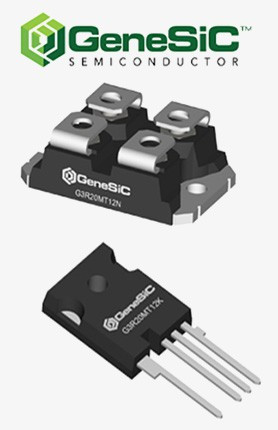
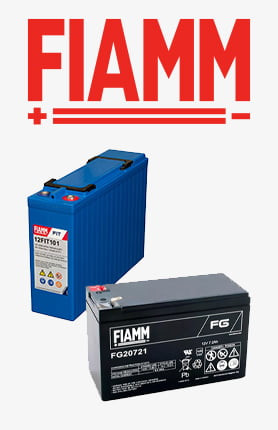
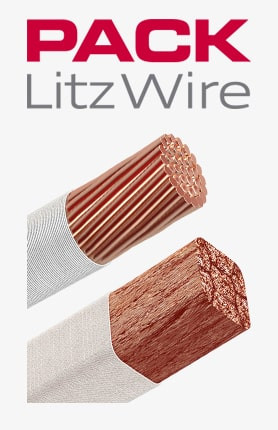
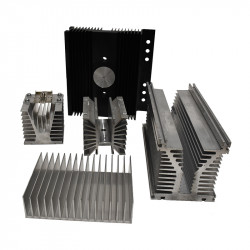
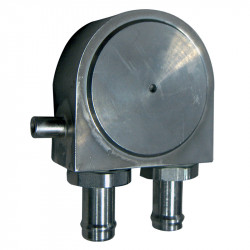
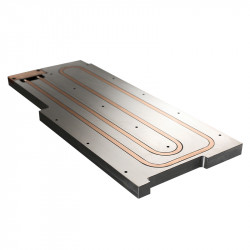
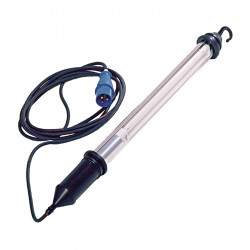
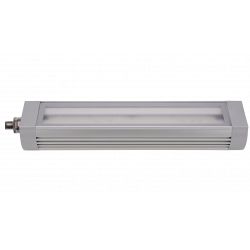
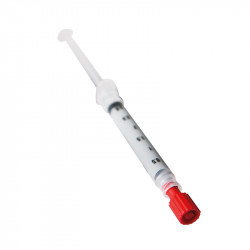
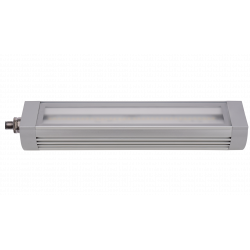
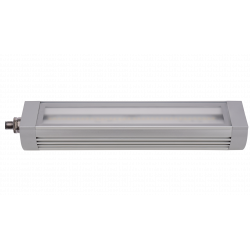
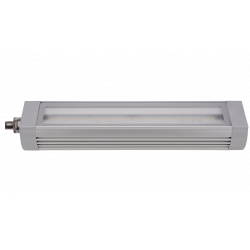
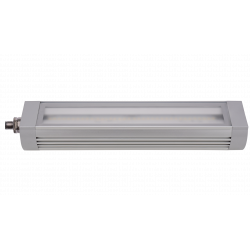
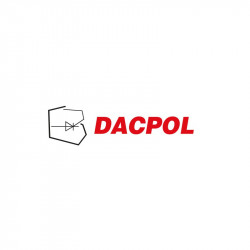
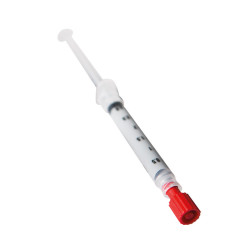
Leave a comment